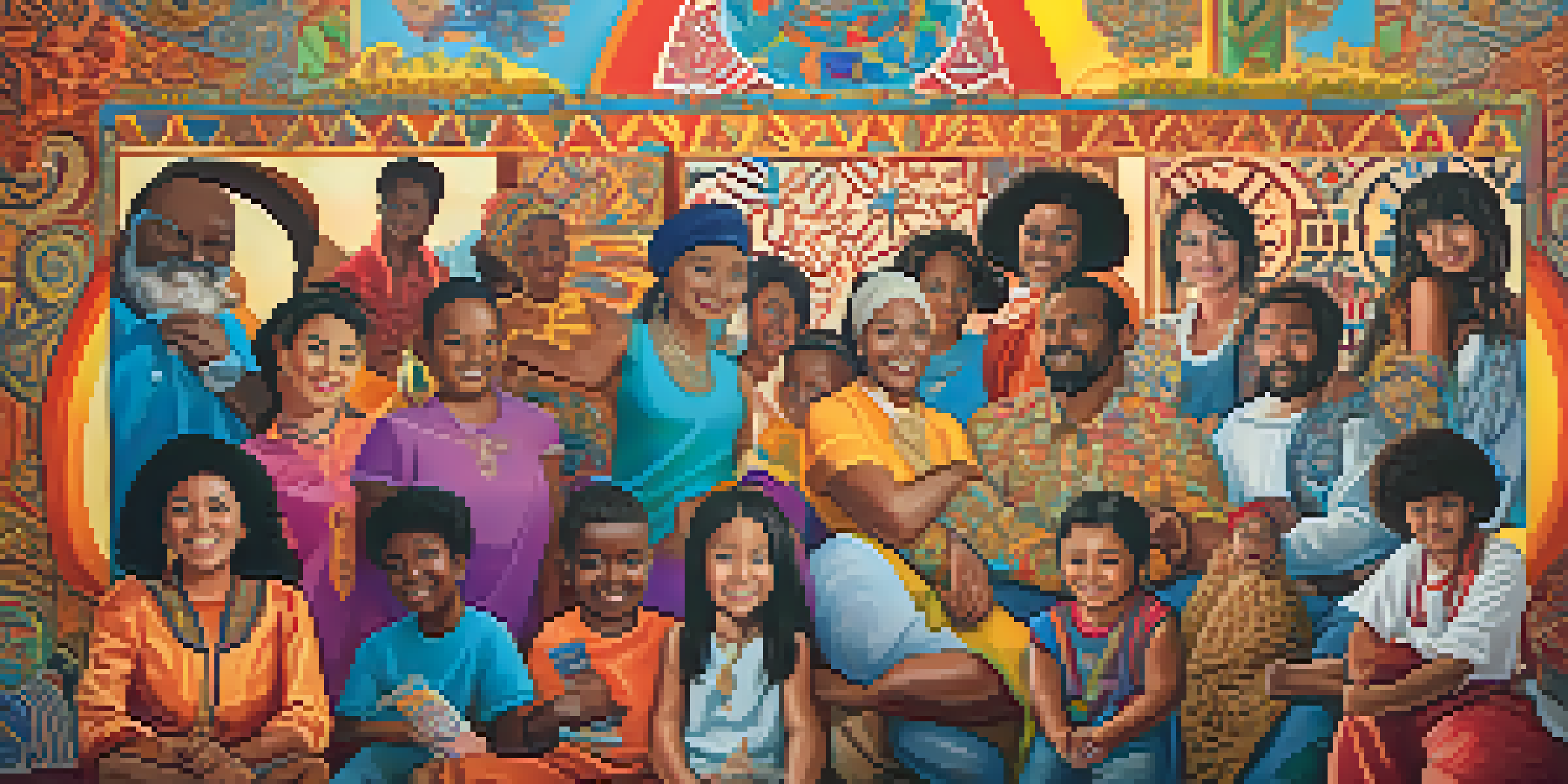Intersectionality: Disability, Race, and Gender in Art

Understanding Intersectionality in Art
Intersectionality is a framework that examines how various social identities overlap and influence experiences of oppression. In the context of art, it highlights how factors such as race, gender, and disability shape both the creation and interpretation of artistic work. By understanding intersectionality, we can better appreciate the diverse narratives that artists bring to the forefront.
The Role of Disability in Artistic Expression
Disability in art challenges traditional representations and invites new perspectives. Artists with disabilities often use their work to express their lived experiences, breaking societal stereotypes and assumptions. This not only creates a rich dialogue around disability but also expands the boundaries of what art can represent.
Intersectionality Shapes Art
Understanding how overlapping social identities influence artistic creation and interpretation enhances our appreciation of diverse narratives.
Race and Its Impact on Artistic Narratives
Race plays a crucial role in shaping the narratives presented in art. Artists from diverse racial backgrounds often draw from their cultural heritage, addressing issues of identity and representation. By showcasing their perspectives, they challenge mainstream narratives and invite audiences to engage with different histories and experiences.
Gender Perspectives in Artistic Creation
Gender has long been a focal point in the discussion of art, influencing both the artists and their subjects. Female artists, in particular, have used their work to explore themes of femininity, empowerment, and societal expectations. Their contributions not only enrich the art world but also spark discussions about gender equity in various artistic spaces.
Diversity Enriches Artistic Expression
Artists from various backgrounds provide unique perspectives that challenge stereotypes and broaden the cultural landscape.
Intersectionality: A Lens for Art Critique
Critiquing art through an intersectional lens allows us to see how multiple identities interact within a single piece. This approach invites deeper analysis and understanding of the complexities involved in artistic expression. It encourages critics and audiences alike to consider how these overlapping identities influence both the creation and reception of art.
Case Studies: Artists Who Embody Intersectionality
Several contemporary artists exemplify intersectionality through their work. For instance, artists like Frida Kahlo and Kehinde Wiley explore themes of identity that intersect race, gender, and personal experience. Their art not only reflects their unique backgrounds but also resonates with broader societal issues, making their work particularly impactful.
Critique Through Multiple Lenses
Using an intersectional lens for art critique reveals the complexities of identity and enriches our understanding of artistic works.
The Importance of Diverse Representation in Art
Diverse representation in the art world is crucial for fostering inclusivity. When artists from various backgrounds share their stories, it enriches the cultural landscape and promotes empathy among audiences. This diversity encourages a more holistic understanding of human experiences, ultimately leading to a more vibrant art scene.
Conclusion: Celebrating Intersectionality in Art
Celebrating intersectionality in art means honoring the complexities of identity that shape our world. By recognizing and supporting artists who navigate these intersections, we can create a more inclusive art community. This not only benefits artists but also cultivates a rich tapestry of narratives that speak to all of us.